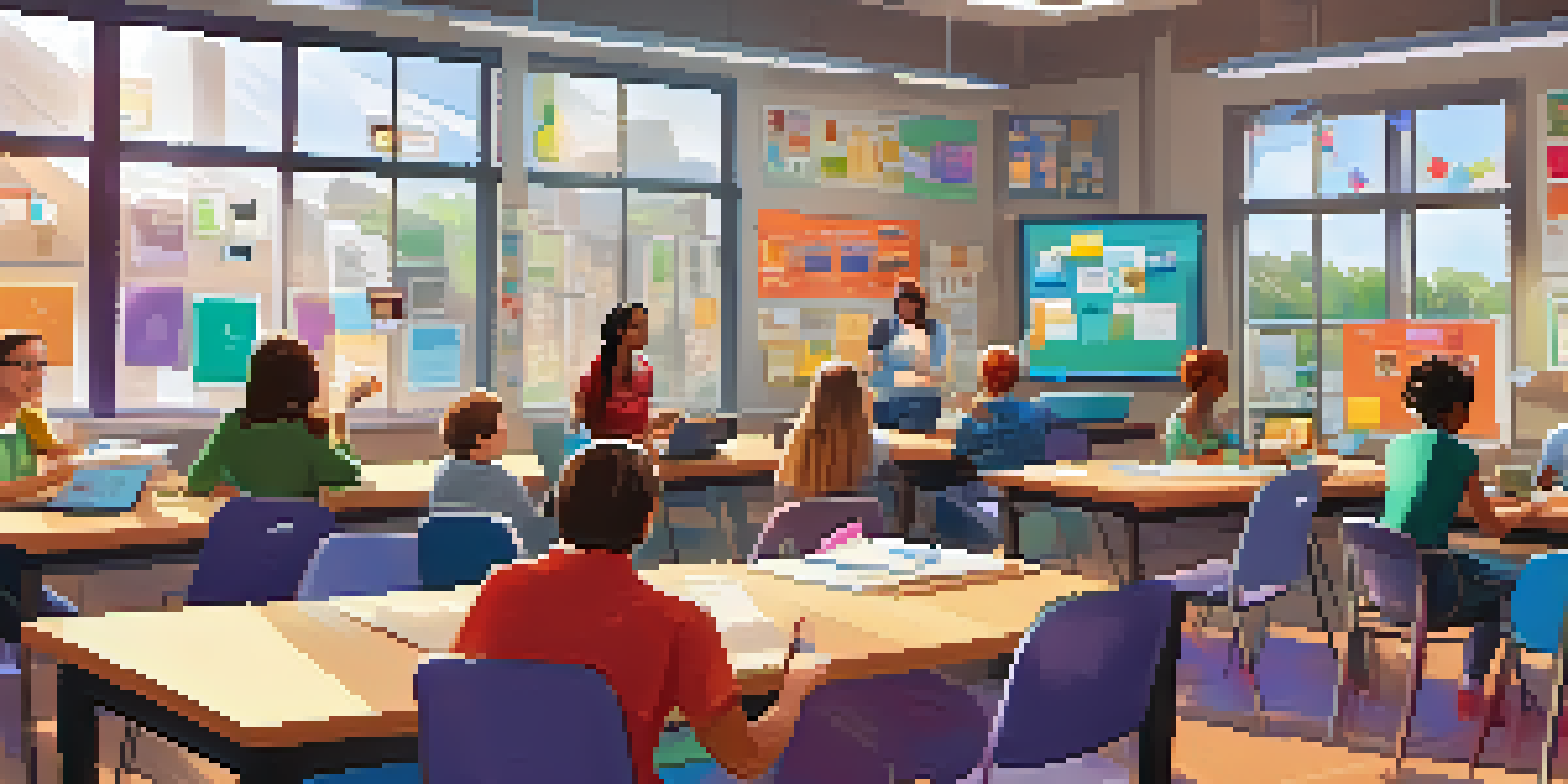The Impact of Gamification on Teacher Professional Development

Understanding Gamification in Education
Gamification is the process of applying game-design elements in non-game contexts. In education, this means using elements like points, badges, and leaderboards to motivate and engage learners. Teachers who embrace gamification can create a more dynamic learning environment that encourages participation and collaboration.
Gamification is not just a trend; it is a powerful tool to engage and motivate learners in a way that traditional methods cannot.
By incorporating gamification into professional development, educators can experience training in an engaging way. Instead of traditional lectures, they can earn rewards for completing modules or engage in friendly competition with colleagues. This shift can lead to increased enthusiasm and a willingness to learn new skills.
Ultimately, gamification transforms the way teachers perceive professional development. It moves away from a monotonous experience to one filled with excitement and interaction, allowing educators to thrive in their roles.
Benefits of Gamification for Teachers
Gamification offers a multitude of benefits for teachers, enhancing both motivation and retention of knowledge. When teachers participate in gamified training, they often find themselves more invested in the content. This increased engagement can result in a deeper understanding of teaching strategies and methodologies.

Moreover, gamification can lead to a sense of accomplishment. As teachers progress through gamified modules and receive immediate feedback, they feel validated in their efforts. This positive reinforcement can boost their confidence and encourage them to apply what they've learned in their classrooms.
Gamification Boosts Teacher Engagement
Incorporating game elements in professional development fosters motivation and active participation among educators.
Additionally, by fostering a community through collaborative challenges, teachers can build stronger professional networks. This sense of camaraderie can lead to sharing best practices and resources, ultimately benefiting their students.
How Gamification Enhances Learning Outcomes
When teachers engage in gamified professional development, they often see improved learning outcomes. The interactive elements help to reinforce concepts, making them easier to recall later. For instance, through quizzes and challenges, teachers can practice their skills in a risk-free environment.
The future of learning is in creating environments that are engaging, appealing, and fun.
This active participation not only aids retention but also promotes critical thinking. Teachers are encouraged to experiment with new ideas and approaches, which they can then implement in their classrooms. This hands-on experience can lead to innovative teaching practices.
As a result, students benefit from teachers who are more adept and confident in their instructional techniques. The positive ripple effect of gamified training ultimately enhances the overall educational experience.
Implementing Gamification in Professional Development
To successfully implement gamification in teacher professional development, it’s essential to set clear objectives. Educators should identify what skills or knowledge they want to enhance through gamified experiences. This focused approach ensures that the training is relevant and impactful.
Next, integrating technology can play a crucial role in creating a gamified environment. Online platforms that allow for interactive modules, quizzes, and real-time feedback can make learning more enjoyable. This tech-savvy approach aligns with the interests of many educators today, who are already familiar with digital tools.
Enhanced Learning Outcomes for Students
Teachers who engage in gamified training often adopt innovative practices, leading to improved educational experiences for their students.
Lastly, it’s important to foster a supportive culture around gamification. Encouraging teachers to share their experiences and celebrate achievements creates an inviting atmosphere. This sense of community can motivate educators to actively participate and explore new learning paths.
Challenges of Gamifying Teacher Training
While gamification offers numerous benefits, there are challenges to consider when applying it to teacher training. One significant hurdle is the varying levels of technology comfort among educators. Some teachers may feel overwhelmed or resistant to adopting new tools and methods, which can hinder engagement.
Additionally, not all gamified experiences are created equal. If the game elements are not thoughtfully designed or aligned with learning goals, they might distract rather than enhance the training. It’s crucial for developers to create meaningful and relevant challenges that resonate with teachers.
Finally, measuring the effectiveness of gamification can be tricky. Educators must establish metrics to assess whether gamified training actually leads to improved teaching practices. Without clear evaluation methods, it may be difficult to justify the investment.
Real-World Examples of Gamification in Education
Many educational institutions have successfully integrated gamification into their professional development programs. For instance, some districts have utilized platforms like Kahoot! for training sessions, allowing teachers to engage in quizzes that promote healthy competition. This not only makes learning fun but also reinforces key concepts.
Another example is the use of digital badges for completing specific training modules. Teachers can showcase these badges on their profiles, providing recognition for their efforts and motivating them to pursue further development. This visual representation of achievements fosters a sense of accomplishment.
Challenges in Implementing Gamification
Despite its benefits, varying tech comfort levels and poorly designed game elements can hinder effective gamification in teacher training.
These real-world examples highlight the versatility of gamification in education. By adopting innovative approaches, schools can create a culture of continuous learning and improvement among educators.
The Future of Gamification in Teacher Development
As technology continues to evolve, the future of gamification in teacher professional development looks promising. With advancements in virtual reality and augmented reality, training experiences could become even more immersive. Imagine teachers practicing classroom management techniques in a simulated environment that mimics real-life scenarios.
Furthermore, as more educators share their successes with gamification, we can expect to see an increase in its adoption across different regions. Schools might start collaborating to create shared gamified platforms, allowing for a broader exchange of ideas and resources.

Ultimately, the future of gamification in education is about creating engaging and effective learning experiences. By focusing on collaboration, innovation, and community, we can inspire teachers to continually grow and adapt in their ever-changing environments.